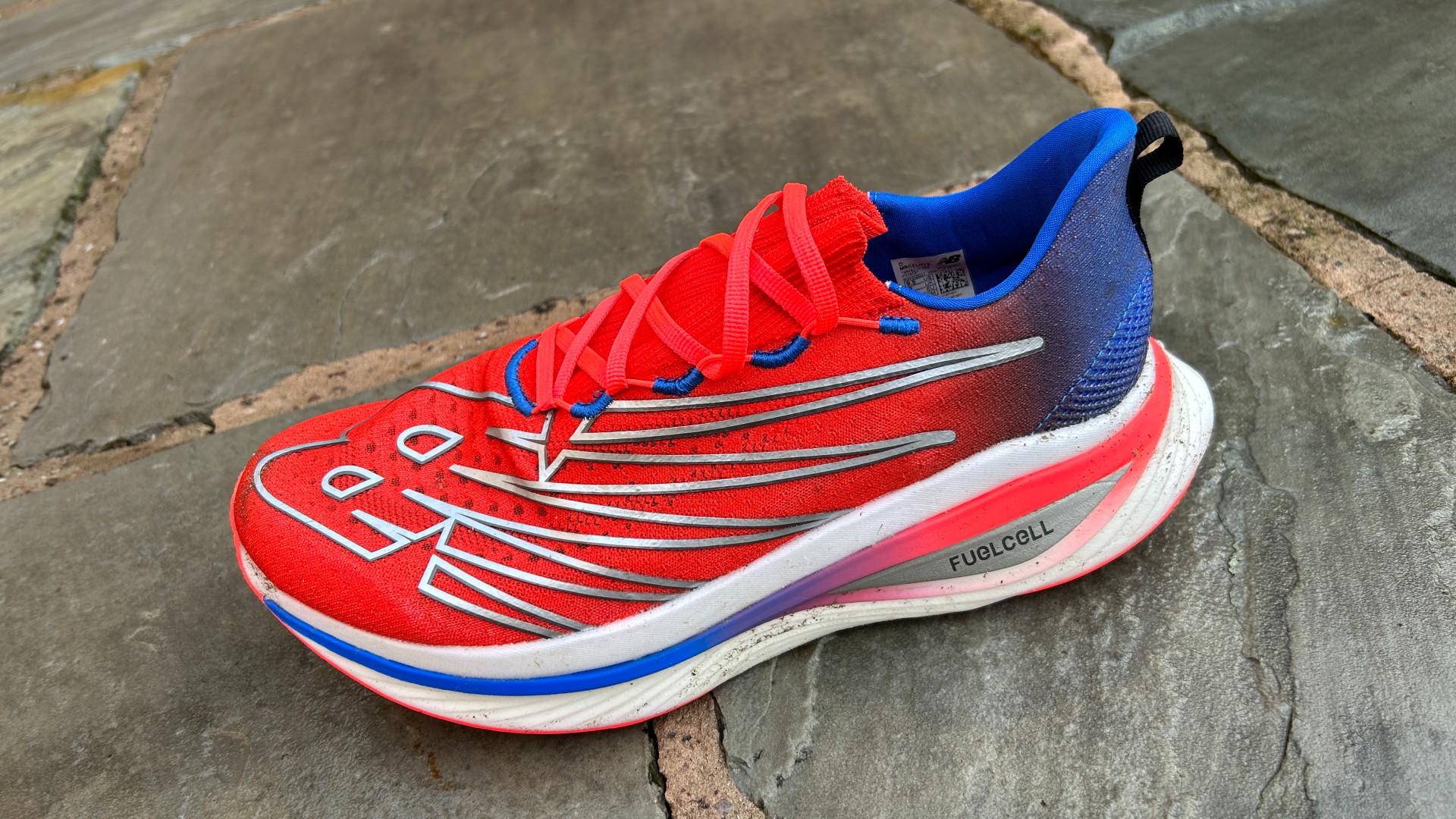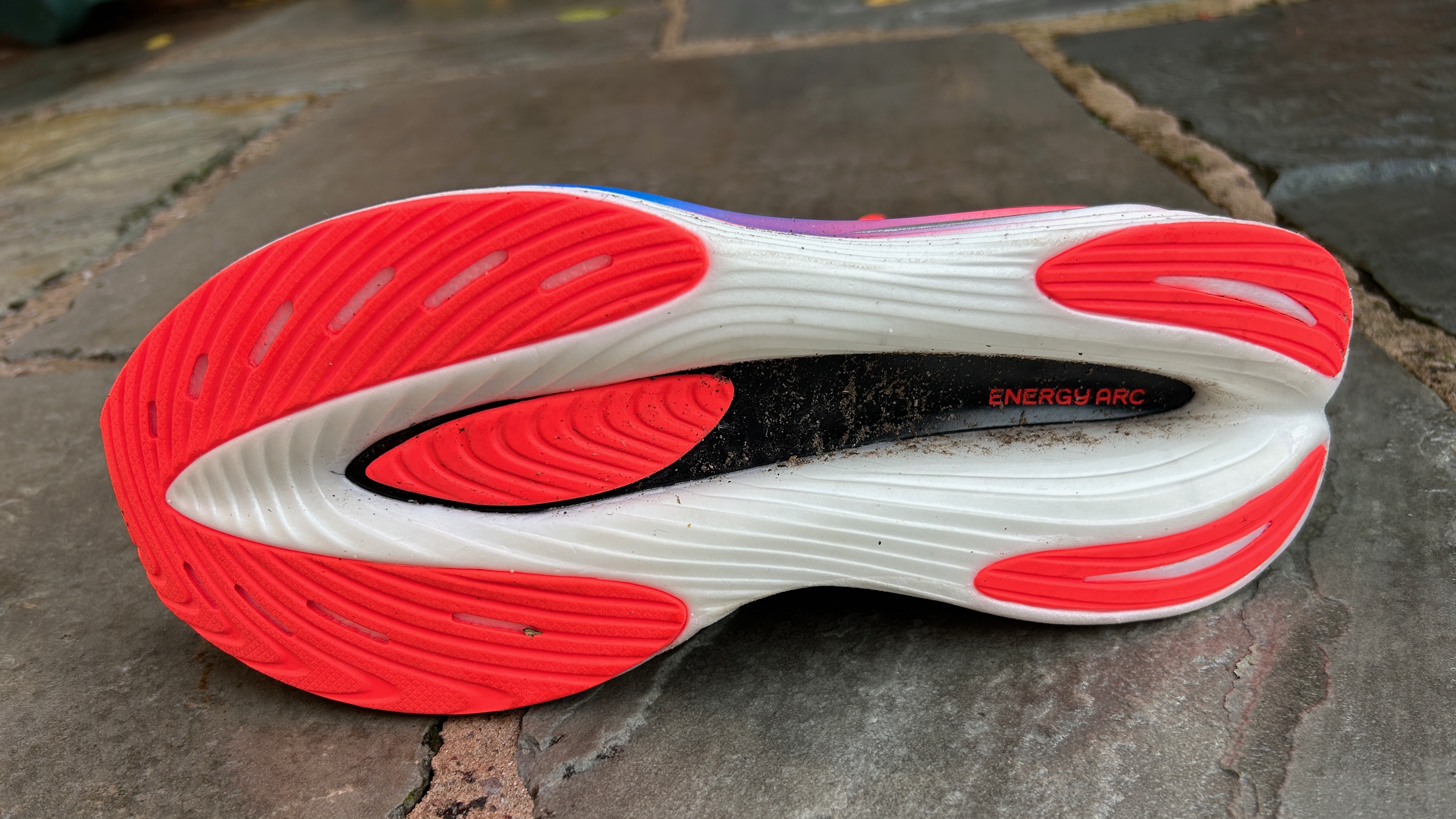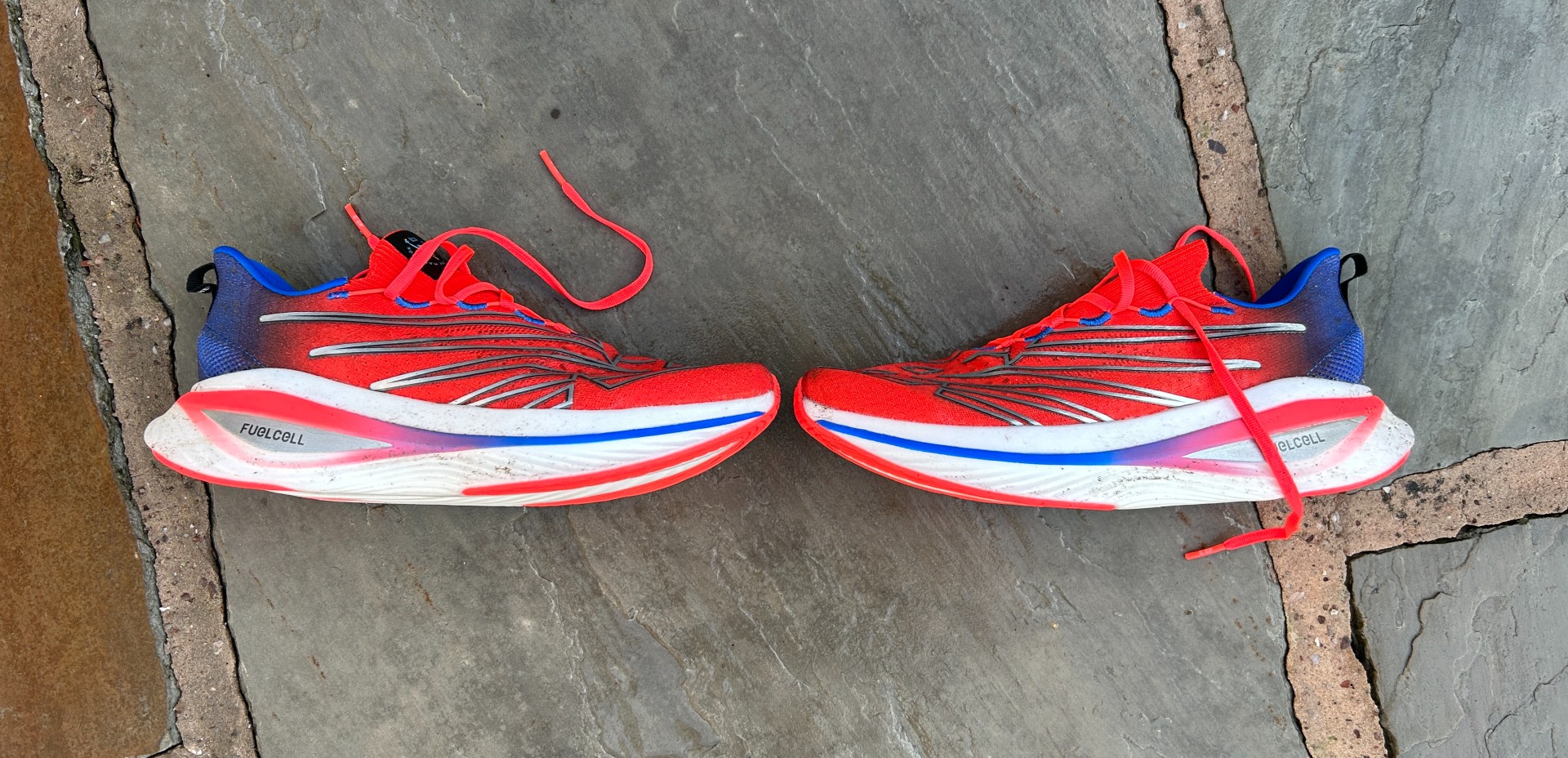Our Verdict
The updates to New Balance’s third-generation carbon plate shoe make it feel faster and more aggressive than the V2, and it’s a great option for races at any distance.
For
- Fast, rockered ride
- Springy midsole
- Versatile racing option
Against
- Higher price
- 4mm drop won’t suit everyone
You can trust Coach
For a few years the Nike Vaporfly was the only show in town, but now every major brand has a carbon plate racing shoe, and most of them release a new generation every year. In 2022 there were several new additions to Coach’s best carbon plate running shoes round-up and nearly every brand had launched their new top shoe by autumn.
New Balance, however, kept us waiting for the successor to the Fuelcell RC Elite V2. The SC Elite V3 was launched in limited quantities in October 2022, a precursor to the full release in February 2023. With the SC Elite V3, New Balance has aimed to create a more aggressive racing shoe than the RC Elite V2, and I would say it has succeeded. The SC Elite V3 is still comfortable, but has a faster transition and a firmer ride that make it feel quicker than the RC Elite V2, and make it one of the best carbon plate racers available.
New Balance FuelCell SC Elite V3 Review: Price And Availability
New Balance launched a special edition of the SC Elite V3 to coincide with the 2022 New York Marathon, but the shoe won’t go on general sale until February 2023. It costs $250/£220, a rise in price on the RC Elite V2, which costs $225/£210.
Design And Fit
The SC in the new shoe’s name stands for SuperComp, a new line of shoes that also includes the New Balance Fuelcell SC Pacer, a short-distance racing shoe and the New Balance Fuelcell SC Trainer, a training shoe with a very high stack.
Some of the significant updates to the SC Elite V3 are taken from the other SuperComp shoes. The EnergyArc carbon plate and rocker design combine with a large midsole cut-out that runs down the middle of the shoe to create a fast transition from heel to toe and ensure maximum energy return.
The SC Elite V3 is also wider at the heel than the RC Elite V2 but narrower at the forefoot, to create stable landings but a more agile feel. The shoe also has a drop of just 4mm, much lower than the 10mm of the RC Elite V2. The weight stays around the same at 8oz/228g for the SC Elite V3 compared with 7.9oz/225g for the RC Elite V2, both in my UK size 9.
The SC Elite V3 fit me well in my normal size. Sometimes New Balance’s racing shoes come up very short in the toe box, but I had no such problems here, and the one-piece knitted upper held my foot comfortably and securely around the heel and midfoot.

How I Tested This Shoe
I have run just shy of 60km in the New Balance SC Elite V3, including two parkruns and a 10-mile run. I have also tested the RC Elite V1 and V2, along with almost all the carbon plate shoes on the market.
Running Performance
I love the RC Elite V2, but its well-deserved reputation as an incredibly comfortable and “friendly” carbon racer is both a strength and a weakness. The RC Elite V2 is a great marathon racing shoe, and actually works well as a fast and comfortable daily trainer too, but it lacks the raw speed of carbon rivals like the Vaporfly.
It was evident from my first run in the SC Elite V3 that it had more speed than its predecessor, and it’s surprising how much the feel of the shoe has changed given that the weight and midsole foam are similar to the RC Elite V3.
The shoe is noticeably more aggressive than the RC Elite V2, tipping you forwards onto your toes rapidly, and the toe-off is more powerful and propulsive than on its predecessor.
The foam underfoot also feels firmer, especially when landing at the heel, and I would say the drop doesn’t feel like it’s 4mm when you’re running. Before looking at the specs I would have assumed this was an 8-10mm drop shoe – the pronounced rocker makes it feel higher than 4mm. That said, I found that my calves ached more after runs in this shoe than in carbon racers with higher drops, since the lower leg muscles are more engaged when running in lower-drop shoes.

I’ve run two hard parkruns in the shoe, the second in 16min 43sec, and it feels nimble and agile over the distance. I also found it gripped well on wet surfaces during those runs and while I did slow for corners it didn’t feel as precarious as other high-stack racing shoes.
I feared the firmer feel to the shoe might make it less enjoyable than the RC Elite V2 for longer runs and general training, but I have found the SC Elite V3 comfortable for tempo and long runs as well as for hard sessions and races. It’s similar to the Saucony Endorphin Pro 3 in that regard – both are more comfortable to use regularly than the Nike Vaporfly.
Is The New Balance Fuelcell SC Elite V3 Worth It?
The RC Elite V2 was a comfortable and efficient marathon racing shoe, but the SC Elite V3 is an upgrade in both performance and versatility. It’s still comfortable and enjoyable to use for a range of training runs as well as races, but feels faster, especially over shorter distances.
I rate the SC Elite V3 in the top bracket of carbon plate running shoes, and along with the Nike Vaporfly, Saucony Endorphin Pro 3 and Asics Metaspeed Sky+ it’s one of the best options for races of any distance. The Nike Alphafly NEXT% 2 and Adidas Adios Pro 3 are more marathon-focused in my book.
Choosing between all these shoes is not easy. Personal preferences in ride feel and drop will dictate which is best for you. I’d still lean towards recommending the Vaporfly and Endorphin Pro 3 as my preferred racers ahead of the SC Elite V3, but it’s very close – whichever you opt for will deliver a top-notch race-day experience.

Nick Harris-Fry is a journalist who has been covering health and fitness since 2015. Nick is an avid runner, covering 70-110km a week, which gives him ample opportunity to test a wide range of running shoes and running gear. He is also the chief tester for fitness trackers and running watches, treadmills and exercise bikes, and workout headphones.

